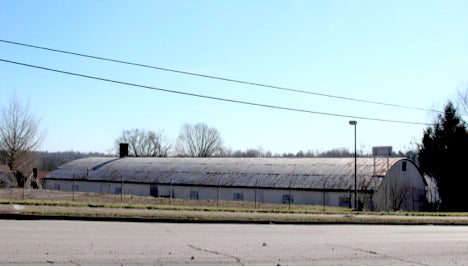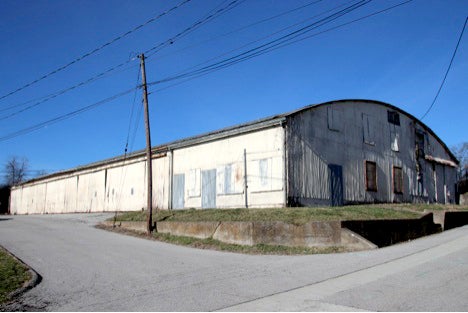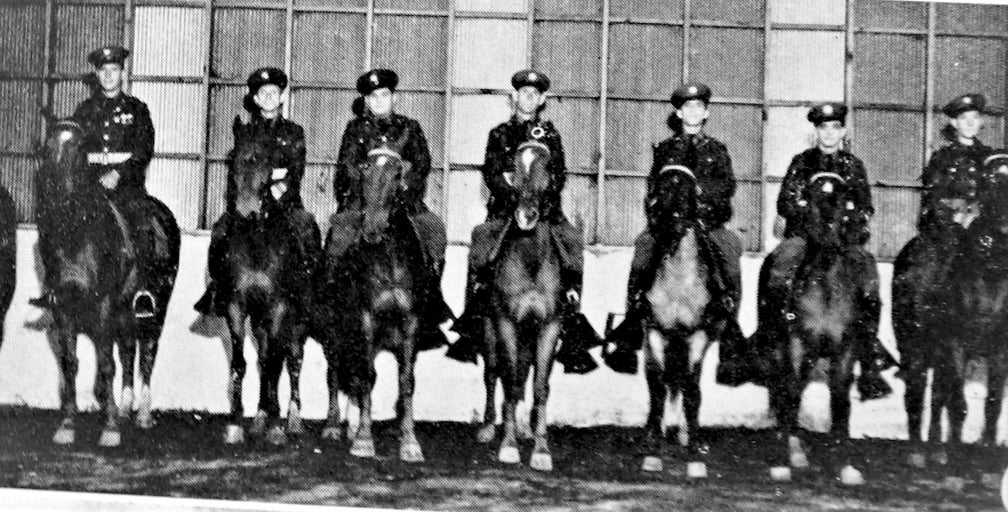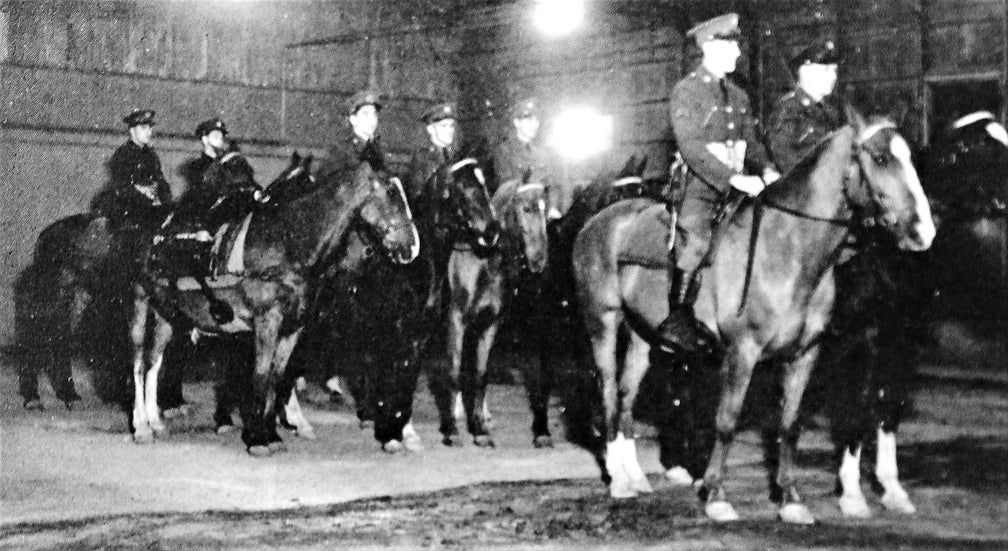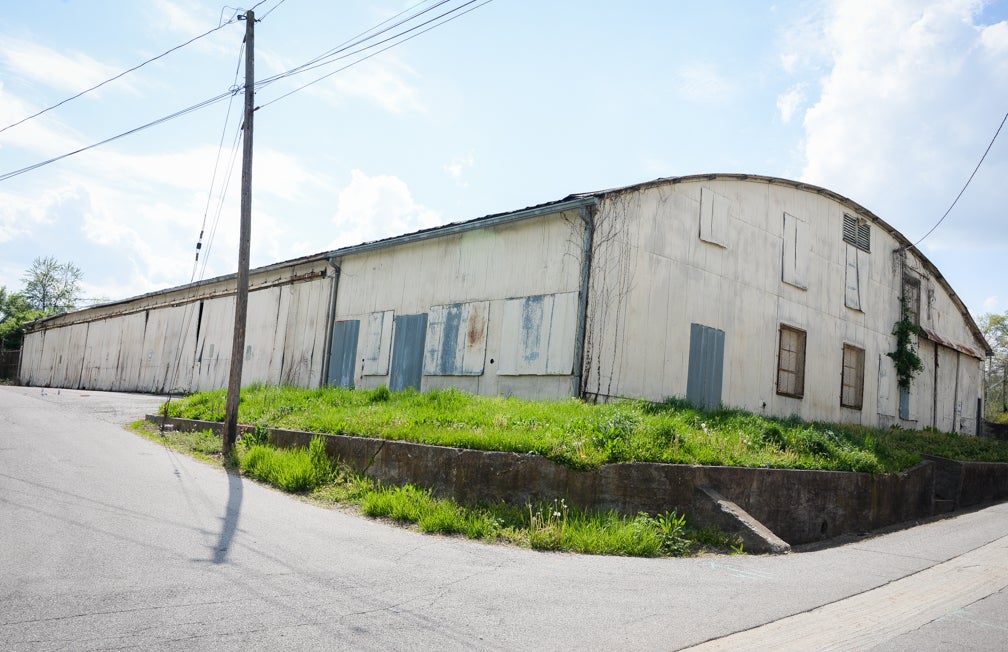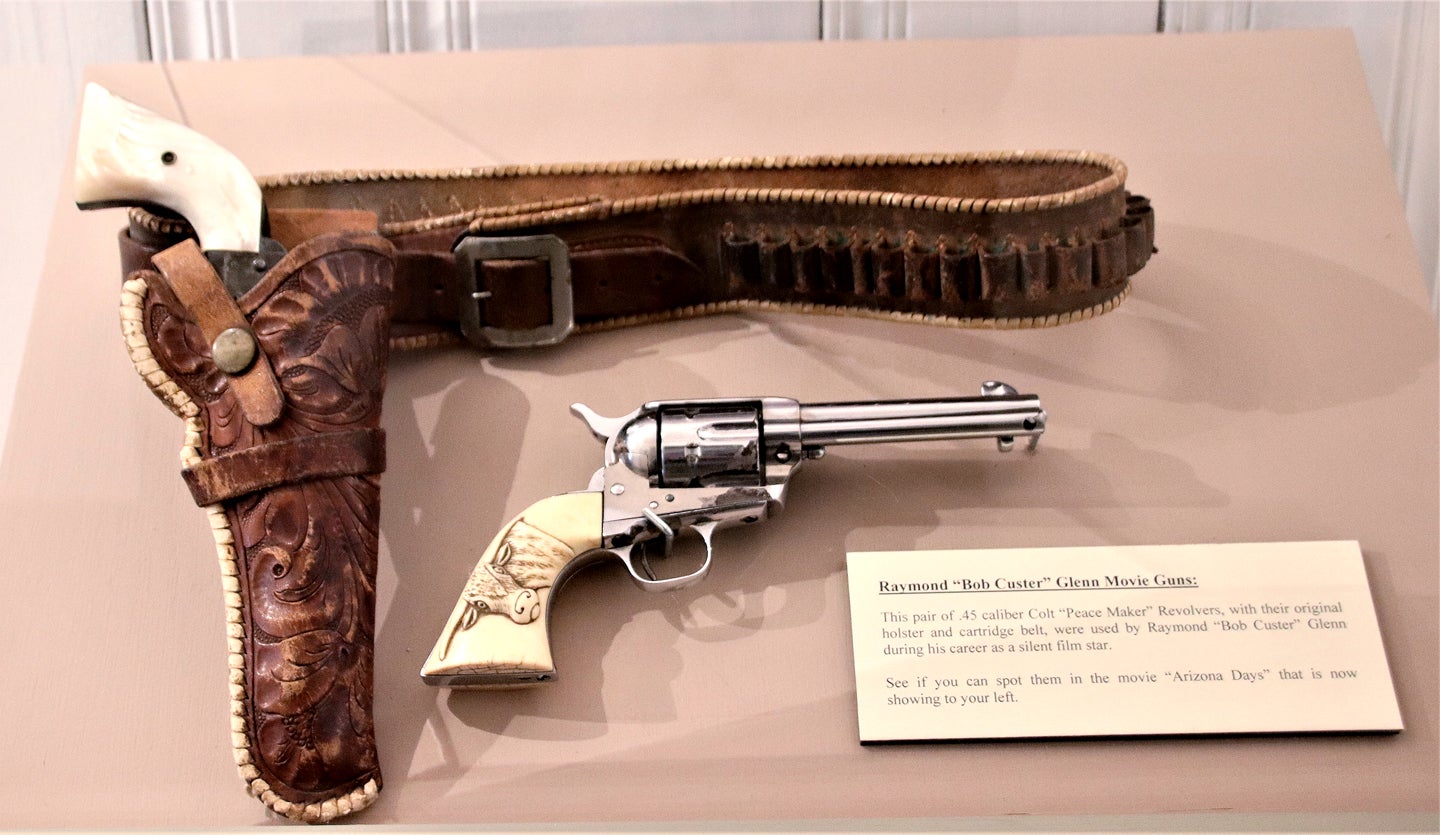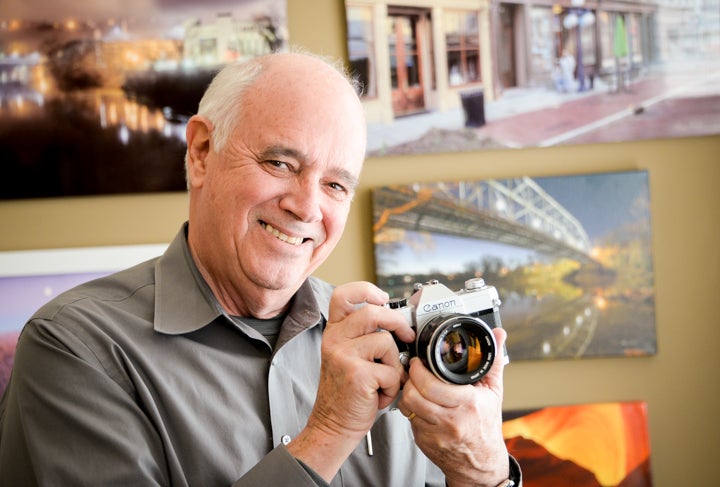By Charles H. Bogart,
As one drives down Martin Luther King Boulevard, from Main Street to the East-West Connector, one will encounter on the left-hand side of the road just before Cold Harbor Drive, a large yellow building with a barrel-vaulted roof. During the 1930s, this wooden building, sheeted in metal, and a destroyed sister building, were stables that housed the horses of Troop A, 123rd Cavalry Regiment, 22nd Cavalry Division, a unit of the Kentucky National Guard. Headquarters of the 123rd Cavalry was in Louisville, Kentucky.
Before the United States became involved in World War I (1917-1918), the largest permanent unit in the U.S. Army and the National Guard was a 1,000-man infantry or cavalry regiment. World War I changed this and divisions, 24,000-man infantry divisions and 14,000-man cavalry divisions, became the standard size Army and National Guard units.
The war department’s 1920 war mobilization plan called for the National Guard to provide 20 infantry divisions (numbers 26 to 45) and four cavalry divisions (numbers 21 to 24) to the U.S. Army upon being federalized. In early 1921, Kentucky organized a National Guard unit in Frankfort. On Nov. 23, 1921, the war department recognized Frankfort’s National Guard unit as Troop A, 54th Machine Gun Squadron, 123rd Cavalry. On April 1, 1929, the war department re-structured Frankfort’s National Guard unit as Troop A, 123rd Cavalry.
During the period 1921 to 1940, Troop A led every governor’s inaugural parade and participated in every Frankfort parade. They also escorted former President Franklin D. Roosevelt during his two visits to Kentucky, and provided support to various local governments during industrial strikes and periods of civil disobedience.
In 1932, the Frankfort National Guard unit built twin stables on Maryland Avenue. The upper stable was lost in 1976 with the building of Martin Luther King Boulevard, however, the lower stable remains. These two stables were modernized in 1937 and became “show places” of how military horses should be housed and cared for. During the 1930s, the U.S. Army was still using horses, not only to mount its cavalry, but also to pull some of its artillery and supply wagons. The surviving lower stable had concrete aisles and stands, overhead hay racks, central watering fountains and electrical lighting. The stable’s stalls lined the north wall of the stable while the south wall consisted of doors to bring the horses quickly outside.
The portion of the stable that faced Maryland Avenue had two floors. The lower floor contained offices and barracks for use when the unit drilled. The upper floor had a storage area and living quarters for the horses’ caretaker. A caretaker had to be at the stables 24 hours a day, seven days a week, as the horses had to be fed and watered each day, their stalls mucked out, their hooves and mouths checked and be taken out doors for exercise.
The upper stable had a dirt floor and served as a riding arena where the men and horses could drill in inclement weather. Troop A’s horse picket line was located where Kentucky State University (KSU) Rosenwald Center now stands, and their outdoor drill field was situated where the former KSU football field is located on South University Drive.
Troop A’s moment of glory came during the 1937 Kentucky and Ohio Rivers Flood. The men of Troop A helped with the evacuation of the State Petitionary, located at High and Holmes Street, to a holding area where the 325 E. Main St. state office building is located. They also helped with high water evacuations and in providing security throughout the city of Frankfort.
On Nov. 1, 1940, by order of the war department, Troop A was relieved of duty with the 22nd Cavalry Division and ordered to turn in their horses. On Feb. 24, 1941, Troop A, by war department order, became the nucleus around which the 103rd Separate Battalion Coast Artillery Corps (Anti-Aircraft) was built. That spring the 103rd was called to active duty and was re-designated by the U.S. Army as 103rd Anti- Aircraft Artillery, Automatic Weapon, Battalion (Mobile). The 103rd AAA AW Bn (Mobile) saw action in North Africa, Sicily and France, landing on Normandy Beach on June 10, 1944, to provide protection to the D-Day landing beaches.
From 1946 until 2005, Troop’s A’s former horse stables were used by the Kentucky National Guard for a number of different purposes: armory, classroom, vehicle service and repair, radiological survey equipment maintenance and emergency management office. Since 2005, the surviving stable has been used by the Kentucky National Guard for general storage, while the site of the upper stable is a parking lot.
The Capital City Museum, 325 Ann St., is seeking photos and information on Troop A, 123 Cavalry and their Maryland Avenue stables.

